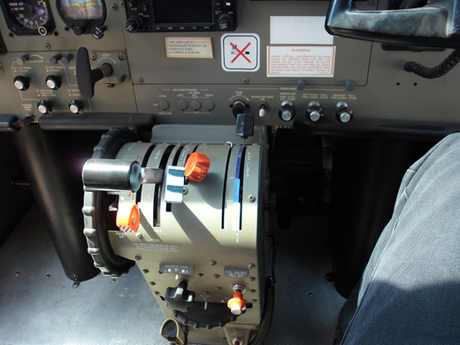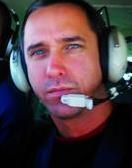Let's start with the basics first. The Fuel Condition Lever is connected to the Fuel Control Unit (FCU). The Fuel Condition Lever has 3 positions: Idle Cutoff, Low Idle and High Idle positions.
The Cutoff position cuts off all fuel to the engine fuel nozzles. The Low Idle position provides an RPM of 52% Ng. The High Idle position provides an RPM of 65% Ng. Low Idle is also known as Ground Idle and High Idle is also known as Flight Idle.

Orange handled Fuel Condition Lever on the top middle portion of the quadrant
When I was trained in the Caravan I was told to never put the Fuel Condition Lever into High Idle and that, "it is not necessary to use". Even though, the Before Takeoff and Before Landing checklists state to put the Fuel Condition Lever into High Idle.
A lot of Caravan owners will tell pilots, that do not have much time logged in Caravans, to leave it in Low Idle. Because of their fear of an ITT over temperature occurring if the pilot were to accidentally move the lever from High Idle to Cutoff (after landing) and then back to Low Idle.
Another reason that owners do not want low time Caravan pilots using High Idle is because if they forget to put it back to Low Idle after landing, they will be taxiing very fast and they might plow into something or somebody.
Keep in mind that these are reasons that I've heard that owners tell new Caravan pilots not to use High Idle, that does not mean that I necessarily agree with them.
Once you are comfortable flying the Caravan you should feel free to use High Idle. It allows for a faster throttle response, which you would want in a go around situation. As stated in the Cessna 208B Caravan Information Manual, "The higher gas generator idle speed for flight provides faster engine acceleration when adding power (from an idle condition) on approach or for a balked landing go-around."
- CaravanPilot.com

